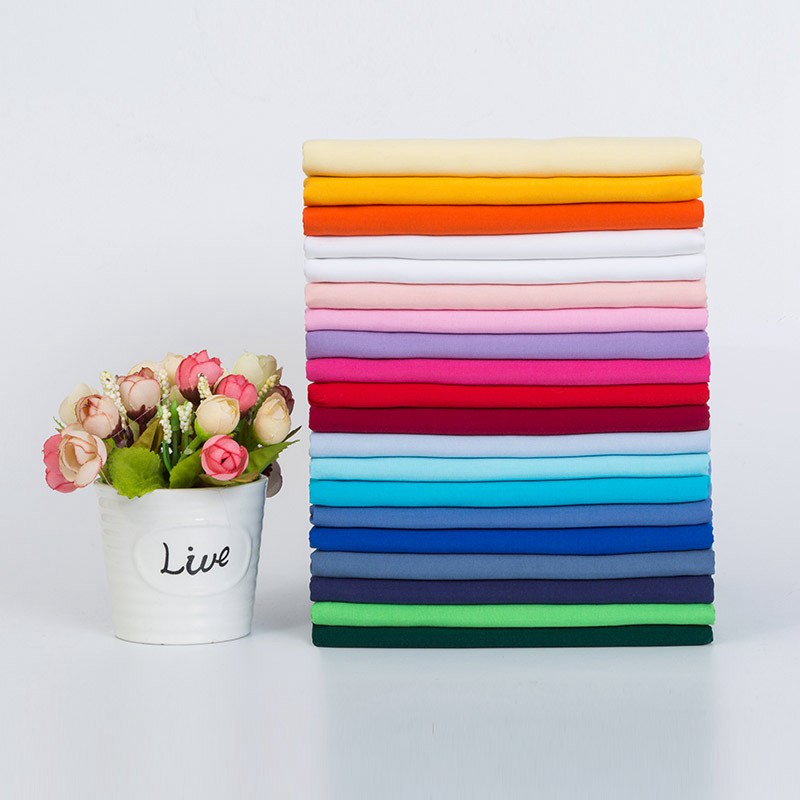Polyester Cotton Shirting Fabric – Durable, Soft, Easy-Care
Why buyers keep coming back to poly–cotton shirts (and what to check before you order)
If you spend your days comparing yardage, lab dips, and lead times (hi, same here), you already know the quiet workhorse of uniforms and retail shirts: Polyester Cotton Shirting Fabric. I’ve watched it ride out trend cycles—from heritage oxford booms to linen summers—because it delivers: durability, color consistency, and easy care. Let’s dig in, with real-world notes from production floors and QC labs.

Product snapshot (T/C shirting poplin, 55/45)
From Jiexiang Textile, based in Zhaoyuan Road, Zhao County, Shijiazhuang, Hebei—an area that’s practically synonymous with high-output weaving.
| Item | T/C Shirting Fabric (Poplin) |
| Composition | 55% Polyester / 45% Cotton |
| Yarn Count | 45s × 45s |
| Density | 133 × 72 |
| Width | 58/59" |
| Weight | ≈110–120 gsm (real-world rolls may vary ±3%) |
| Finish Options | White, Dyed, Printed; preshrunk; optional easy-care resin |
| Typical Performance | Shrinkage ≤3% (ISO 6330); Colorfastness to washing Grade 4 (ISO 105-C10); Tensile warp ≈700 N / weft ≈500 N (ISO 13934-1) |
| Use | Shirting, uniforms, hospitality, retail garments |
Process flow (how it’s really made)
Materials: blended staple fibers (poly 1.2–1.4D with mid-staple cotton). Methods: ring-spun 45s, air-jet weaving to poplin 133×72 for a crisp hand. Then singeing, desizing, scouring, bleaching, dyeing/printing, tentering, preshrinking, and final calender. QC uses the 4-point system (ASTM D5430), plus ISO 105 colorfastness and ISO 13934 tensile checks. Service life? In uniforms, I usually see 12–36 months depending on wash cycles and friction points (collars get there first).

Where it’s used (and why)
- Corporate and school uniforms: easy care, stable sizing, bulk dye consistency.
- Hospitality and healthcare: abrasion resistance, frequent laundering, quick dry.
- Retail shirting: sharp poplin surface takes prints and micro-checks beautifully.
Advantages: crease resistance, lower shrinkage than 100% cotton, better pilling control than bargain synthetics, and predictable lead times. Many customers say it “just behaves” in production—less surprise skewing after finishing.
Market trends (quick take)
This year, two asks keep popping up: fluorine‑free stain guards and OEKO‑TEX Standard 100 certifications. Also, small brands want Pantone-matched short runs—surprisingly doable if you accept a slightly longer dyehouse queue.

Customization tips
- GSM tweaks: 115 gsm feels light for tropical uniforms; 120 gsm adds opacity.
- Finishes: easy-care resin, softener, light peach, or antibacterial (check biocide regs).
- Colors/prints: Lab dips in 5–7 days; strike-offs for placement prints ≈7–10 days.
Case notes from the field
- A hotel group in the GCC ran 5,000 m of Polyester Cotton Shirting Fabric in navy; after 50 industrial washes, colorfastness to washing stayed at Grade 4 and tear values (ASTM D1424) held within 10% of day‑zero. They reordered, literally saying “wrinkle behavior saved ironing hours.”
- A schoolwear buyer in LATAM switched from 100% cotton to Polyester Cotton Shirting Fabric at 120 gsm; returns for shrinkage dropped by ≈60% season-on-season.

Vendor comparison (indicative)
| Vendor | Origin | MOQ | Lead Time | Certs | Notes |
|---|---|---|---|---|---|
| Jiexiang Textile | Shijiazhuang, Hebei, CN | ≈2,000 m/color | 15–25 days dye; 7 days white | ISO 9001; OEKO‑TEX 100 (upon request) | Stable 133×72 poplin; uniform-friendly finishing |
| Regional Mill A | VN/IN (varies) | 3,000–5,000 m | 20–30 days | OEKO‑TEX 100 | Good bulk pricing; check shade repeatability |
| Trading House B | Mixed | 1,000 m (split shades) | 10–20 days | Varies | Flexible MOQs; QC diligence needed |
Testing checklist before you commit
- ISO 105 (C06/C10) colorfastness to washing/sweat; ≥Grade 4 target.
- ISO 6330 dimensional change after 3 cycles; aim ≤3% both ways.
- ISO 13934-1 tensile and ASTM D1424 tear for seam security.
- Needle-heating and seam slippage on your actual sewing line—sounds fussy, but it saves headaches.
To be honest, that’s the beauty of Polyester Cotton Shirting Fabric: fewer variables, smoother production. And when the merch team asks “Can we have it in six pastels by next month?”—you can probably say yes.
Authoritative citations
- ISO 105 Textiles—Tests for colour fastness (C06/C10), International Organization for Standardization.
- ISO 6330 Textiles—Domestic washing and drying procedures for textile testing, ISO.
- ISO 13934-1 Textiles—Tensile properties of fabrics—Strip method, ISO.
- ASTM D1424 Standard Test Method for Tearing Strength of Fabrics by Falling-Pendulum Type, ASTM International.
- OEKO‑TEX Standard 100—Product Class II/III criteria, OEKO‑TEX Association.
-
Hot Sale 180D CEY Crepe AirFlow Woven Fabric 100% PolyesterNewsNov.14,2025
-
Twill TR Fabric for Elastic Suits & Trousers, ShrinkproofNewsNov.14,2025
-
Grey Muslin Fabric — Soft, Durable, Bulk & Custom SizesNewsNov.14,2025
-
CEY Crepe Fabric, Plain Woven Airflow Polyester TextileNewsNov.14,2025
-
Wholesale Custom TR Fabric 80/20 Soft Arabic Thobe FabricNewsNov.14,2025
-
Polyester Cloth - Durable, Wrinkle-Resistant, Factory DirectNewsNov.05,2025
-
TR 80/20 Poly Viscose Twill Thobe & Suiting Fabric Easy-CareNewsNov.05,2025











